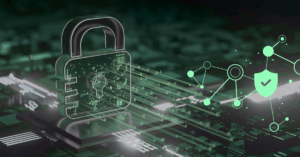The Top 5 Trends & Takeaways from Black Hat 2024

The Black Hat USA 2024 conference, held from August 3-8 at the Mandalay Bay Convention Center in Las Vegas, once again proved to be a cornerstone event in the cybersecurity landscape. Bringing together a diverse array of cybersecurity professionals, from analysts to CISOs, the conference served as a platform for exploring the latest trends, technologies, and challenges facing the industry. This year’s event was particularly notable for its focus on emerging technologies and strategies, addressing critical issues such as AI, IoT vulnerabilities, election security, and the importance of collaboration in cybersecurity programs. The Asimily team had the pleasure of swinging by the conference where we heard from industry experts, partners, and CISOs alike share the most compelling trends impacting the state of cybersecurity today. These five important takeaways from the conference highlight key areas of focus for CISOs in 2024.
1. Navigating AI in Cybersecurity
Artificial Intelligence (AI) was a major focus at Black Hat USA 2024, with several sessions dedicated to exploring its applications in cybersecurity. One of the standout sessions, “Predict, Prioritize, Patch: How Microsoft Harnesses LLMs for Security Response,” highlighted how Microsoft uses Large Language Models (LLMs) to predict and prioritize security threats. This approach exemplifies the increasing reliance on AI to enhance security measures, making threat detection and response more efficient.
While AI proves promising for many applications, sessions at the event underscored the necessity for cybersecurity professionals to thoughtfully and carefully integrate AI technologies into their strategies where applicable. AI can play a huge role in augmenting pattern recognition in cybersecurity, especially when implemented through cybersecurity vendors.
2. The Rapidly Developing Advancements and Challenges in IoT Security
Internet of Things (IoT) security has emerged as one of the biggest and often ignored cybersecurity challenges in 2024. This topic gained ample attention at the conference, reflecting the growing proliferation of connected devices and their associated vulnerabilities. With the number of connected IoT devices predicted to reach 41.6 Billion globally by 2025, it’s clear that IoT security is a crucial issue for CISOs. Numerous sessions at the conference highlighted the potential risks posed by insecure IoT devices in both consumer and industrial settings. The discussions emphasized the fundamental need for robust security measures to assess and protect IoT ecosystems from exploitation.
Alongside the importance of adopting comprehensive security frameworks and best practices to address the unique challenges of IoT security, sessions at the conference dug into key components of IoT security including device authentication, asset visibility, data encryption, and network segmentation. But to operate effectively and efficiently, CISOs need IoT security tools that go beyond device visibility and vulnerability patching. IoT vulnerabilities require nuanced analysis to determine their risk level and likelihood of exploitation. CISOs in 2025 will need to rise above the noise generated by visibility alone and lean into technologies that emphasize actionable insights based on exploitability and risk level.
3. Digging into Cloud Security Challenges and Innovations
Cloud infrastructure is fairly ubiquitous across organizations today. It’s no surprise that cloud security was covered extensively throughout sessions at Black Hat, with an emphasis on new technologies, emerging threats, and best practices informed by industry leaders. Sessions like “Breaching AWS Accounts Through Shadow Resources” and “The GCP Jenga Tower: Hacking Millions of Google’s Servers With a Single Package” delved into vulnerabilities within major cloud platforms like AWS and Google Cloud Platform (GCP). These discussions provided critical insights into potential risks and effective mitigation strategies for these crucial systems. Broadly, many at the conference emphasized the importance of securing complex cloud environments and highlighted the need for continuous innovation to address emerging vulnerabilities.
4. Global Election Security in Today’s Connected World
A key highlight of the conference was the keynote session titled “Democracy’s Biggest Year: The Fight for Secure Elections Around the World.” This session addressed the critical issue of election security, particularly in the context of the upcoming global elections. The discussion focused on the challenges of securing electoral processes against cyber threats and the strategies being implemented to safeguard democratic institutions. This topic is of paramount importance as the integrity of elections is increasingly threatened by sophisticated cyberattacks. Looking closely at government organizations’ cybersecurity standards and strategies will be paramount to CISOs looking to build out best-in-class cybersecurity programs within their own organizations.
5. The Role of Collaboration in Cybersecurity
The importance of collaboration was a significant theme at the conference, highlighted in sessions like the Locknote panel discussion featuring Ellen Cram Kowalczyk, Jeff Moss, and Nathan Hamiel. The panelists emphasized that collaboration among cybersecurity professionals, organizations, and governments is crucial for addressing complex cyber threats. By sharing knowledge, resources, and best practices, the cybersecurity community can develop more effective strategies to combat emerging threats. This collaborative approach is essential for building a resilient cybersecurity ecosystem. Underscoring the critical need for collaboration and cooperation, CISOs should have a clear understanding of their cybersecurity tech stack and prioritize vendors that can work collaboratively in the ecosystem to drive innovation for their organization.
Similar to previous years, Black Hat USA 2024 provided invaluable insights into the current state and future direction of cybersecurity. These trends transcend industry as CISOs across both private and public sector industries adopt cloud-based and IoT technologies. Cybersecurity remains a dynamic and evolving field, emphasizing the need for professionals to stay informed and adaptable in the face of new challenges moving into 2025.
Secure Every IoT Device.
Automatically.
Cyber threats move fast — so should you. Asimily gives instant inventory and smart, prioritized risk mitigation insights for every IoT, OT, and IoMT device — so you can take action before threats strike.




